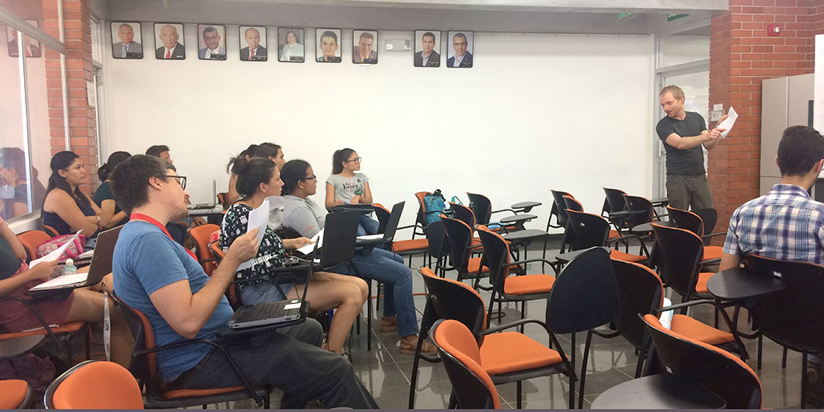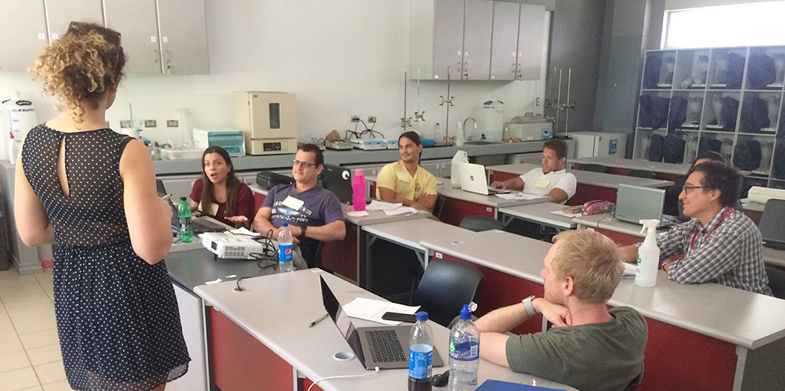For better exemplification of the benefits of managed aquifer recharge and its role in sustainable water resources managegement, a short training course on groundwater modeling was provided for graduate students and members of staff of HIDROCEC-UNA. To set the stage for the course, it was necessary that all participants were at a similar level of understanding related to groundwater management. For this, JProf. Marc Walther (TUD) provided an introductors lecture on groundwater modeling and visualization. In his lecture, Marc explained why the subsurface, i.e. the porous media and water stored within, needs to be monitored for a reliable assessment of the status quo. The data obtained through monitoring can then be used for the setup of a groundwater model, which provides the possibility to run through different management scenarios. However, modelling results need to be interpreted as the models are only simplified, abstract representations of the real world. For this, visualizations of the modelling results need to be created. Such visualizations are the most important tool to carry the expert knowledge to the decision maker. Finally, visualizations, and thus modelling results, should show the possible outcome of management options, if not better also the inherent insecurity of modelling, which arises from the simplification of the real world.

Following the introductory course, Ralf Junghanns (INOWAS, TUD) introduced the main principles of the web-based groundwater modelling platform INOWAS. The participants learned how to represent an abstracted version of the reality using a simplified con-ceptual model, then were guided through the sequential steps in the setup and calcu-lation of the model using the INOWAS interface.

In continuation of the training course, Dr. Serena Caucci organised and led an interactive workshop on stakeholders’ assessment for sustainable water management. The workshop was attended by graduae students and staff members of HIDROCEC-UNA.
